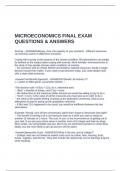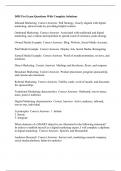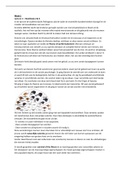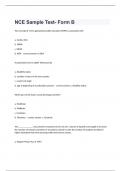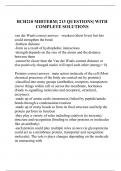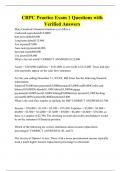Tentamen (uitwerkingen)
MICROECONOMICS FINAL EXAM QUESTIONS & ANSWERS
- Vak
- Instelling
Scarcity - ANSWERSMoney, time, the capacity of your stomach... Different resources can become scarce in difference scenarios. Coping with scarcity is the essence of the human condition. Microeconomics can simply be defined as the subject about coping with scarcity. More formally: microeconomics ...
[Meer zien]
